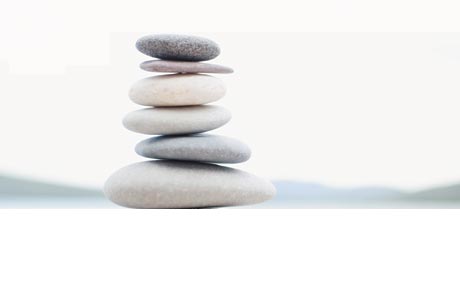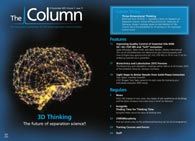Finding Time for Thinking Time
Finding Time for Thinking Time
Someone asked me the other day how much thinking time I factored into my work. I didn’t really consider my response, automatically commenting that it would be a luxury to have any thinking time at all - either inside work or outside of it!
(Photo Credit: Tetra Images/Getty Images)

The person who asked this question was older than me, perhaps by a generation. I have noticed that he takes time to read the newspaper (physical not electronic) over breakfast and is often more quiet in meetings than others. After giving his question some more thought (in the little thinking time I have), I asked why he had asked. He replied: “You always look so busy and achieve a lot, but you must build in thinking time if you really want to innovate or solve deep problems.” Sounds very Zen right? A little “Management Speak”? His comments have been playing away in the back of my mind for weeks and I’ve concluded that he may well have a very good point. I see laboratory managers and analytical staff rushing all the time. Rushing to do all of the things that, if you are reading this piece, you should be doing instead of reading this piece. You will all have a long list of those. It hasn’t always been like this. I can remember the days when the following were seen as acceptable and not “slacking” or “luxury” time:
- Going to the library to research.
- Reading a journal at your desk.
- Trying a new approach on an instrument.
- Considering new or better ways to report or analyze data.
- Seeing what happens if...
- Going to an off-site seminar.
- Having a sales person visit.
- Inviting a speaker to deliver a talk, which wasn’t billed as “lunch and learn”.
- Properly researching why methods don’t work.
- Properly researching why instruments have certain susceptibilities.
- Learning how to use a piece of equipment or software properly.
I freely admit that if I see people in our laboratory environment doing some of the activities above, I do question if they have enough work to keep them busy. What a crazy situation.
I asked my learned older colleague if he thought this change was because all the intellectual challenges within our branch of science have been solved and that we were now effectively operating a commoditized service where productivity far outweighs creativity. His sage reply was: “Only if you predict doing no more method development and require no future budget for instruments with better capabilities.” I absolutely refute that we are at the end of the development line for chromatography as a science or that we have no new challenges to face. I absolutely believe that we need to have thinking time built into our schedules. The question is what is the best way to do this and what are the benefits given the pace of life, the immediacy of information, and the demands of the modern life (in and out of the laboratory). I’m proposing a creativity experiment in my laboratory, and I’d like readers of this column to do the same. I’m ring-fencing two hours per week in my schedule and those of my staff for “thinking time”. I know what you’re thinking:
- Thinking about what?
- What if I haven’t got anything to think about?
- Oh the luxury of being able to spare that amount of time.
- Are you kidding - with my workload!
- I’ll never get that batch of data processing done.
- I’ll fit it in over lunch.
- What a waste of time - everything is faster these days, just live with it.
- I’m a do’er not a think’er
I know because these are some of my colleague’s replies when I suggested this was going to happen. However, we are all so “compressed” these days, engaged in the production of data and firefighting that we don’t see that there are better ways to do things, which, if adopted and developed, would help us to make more time. I’m in no way a psychology major, but believe me the internet is full of useful tricks and tips on developing your creative, critical, and analytical thinking skills and I’ve spent a little time researching how best to use my thinking time. Here are some of the takeâhome’s from my research that I’m going to try and use to develop this new approach:
- At the start of each exercise, choose an object from your desk or lab bench and (mentally) break it down into component parts, describing each part to yourself and its relationship with the other parts of the object. Do this for around two minutes and choose a different object or part of the instrument each time.
- Use your first session to define all of the issues you face, problems you would like to solve, or improvements that you would like to make. Don’t make any one session longer than around 30 minutes.
- Choose just one from the list for each session that will help to define the boundaries of your task. An author, incorrectly credited as Ernest Hemingway, was once challenged to construct a whole story in just six words, to demonstrate that constraint in thinking is a useful tool. His story was “For sale: baby shoes, never worn” - impressive!
- Creative thinking is really just making connections between what is already known. Most creative people feel guilty when asked where their ideas come from because the vast majority are observations of what already exists, but connected differently. Draw your problem or topic, however you would like, and then make links between things that are “obviously” connected. Examine each connection for better ways of achieving the connections, or for new connections that haven’t previously been made.
- Think of the questions or unknowns associated with the inability to solve the problem or to progress your idea: Try to answer each of these questions in as many ways as you can (aim for 20 answers for each question).
- Don’t be afraid to be “blank”, run into a dead end, get no answers to a question, become completely “stuck”, or run out of ideas, connections, or inspiration!
- Remember to follow up on the outcomes from your session: “Does an instrument exist that can do that?”; “Is there a filter that we can fit”; “I wonder if column X would do the job”; “Could we run at twice the flow rate without compromising quality”; and so forth.
I think I know how you are feeling just now. The points above make you feel a little uneasy. They seem a little pointless, at the very least you struggle to see just what you need to do, or the suggestions seem impenetrable or irrelevant. I get it. We are scientists and all of this “creative” stuff doesn’t sit easily with us. But that’s the point of this experiment. To take us out of the usual and comfortable and deposit us in a place that fosters better thinking. I know I’m going to hate my first session because I don’t have a clearly defined idea of what needs to be done, or the expected outcomes. There isn’t a logical path through the session. However, if it allows me to be more strategic, innovative, or effective then it’s worth a try. I’ll report back in a future column how things are going and would welcome input from any readers who might also decide to overcome their fear of the creative!
Contact author: Incognito
E-mail: admin@chromatographyonline.com

A Final Word from Incognito—The Past, Present, and Future of Chromatography
February 10th 2022After 14 years in print, Incognito’s last article takes a look at what has changed over a career in chromatography, but it predominantly focuses on what the future might hold in terms of theory, technology, and working practices.
Sweating the Small Stuff—Are You Sure You Are Using Your Pipette Properly?
October 7th 2021Most analytical chemists believe their pipetting technique is infallible, but few of us are actually following all of the recommendations within the relevant guidance. Incognito investigates good pipetting practice and busts some of the urban myths behind what is probably the most widely used analytical tool.